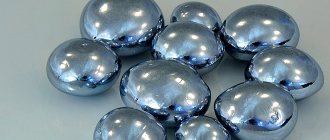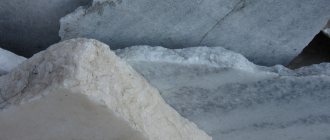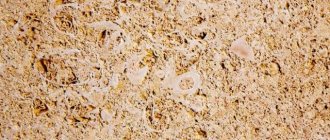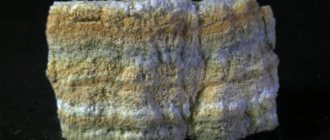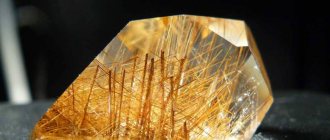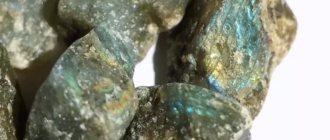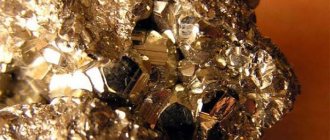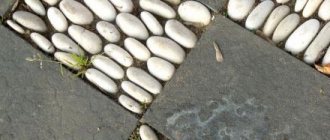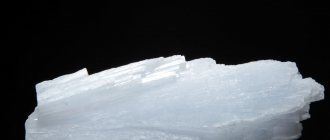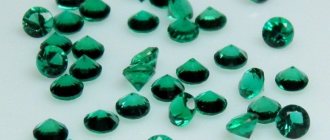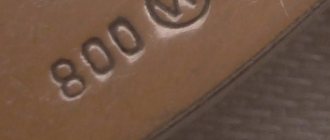Over the past centuries, people's tastes have changed dramatically. Designers use new styles in the interior, or mix them with each other. No matter what, classics will always be in fashion. An integral element in traditional building finishing is gypsum.
The distinctive properties of gypsum material are strength, uniform color, and plasticity, which allows you to easily implement any of your ideas from stucco with ornaments to sculptures. It is important to use the products correctly, create the necessary storage conditions, and reconstruct them with care, and gypsum products will last for centuries. Take a look at temples and palaces both in Russia and around the world, with stunning interiors created using plaster and alabaster.
Gypsum contains components with many advantages; the chemical bonds are very strong. Because of this combination, the substance can well be called a unique material.
- Natural origin. Gypsum is a completely environmentally friendly material, which gives it a great advantage over any other modern material. Manufacturing is its extraction in natural conditions.
- Improved moisture exchange. In buildings where the decoration is made of stucco, the air seems cleaner, and this makes it easier to breathe, despite the fact that the temperature outside is high or, conversely, it is raining. The fact is that in terms of water-gypsum, moisture is absorbed perfectly; if there is enough water in the air, then it is released.
- Restoration. Stucco can be completely restored, unlike glass, stone, metal and wood. In the hands of professionals, after restoration work, stucco can look perfect, despite its age. But this won’t work with porcelain; it won’t be possible to recreate a broken piece of a vase without it being noticeable and making it look like new. But plaster products do not indicate that they were touched by the hand of a master. They always look great.
- Variety of decor . In the hands of a professional, plaster can take any shape with the smallest details in the design. Feel free to imagine: paint, patina, prime or cover with any other compositions that add shine or create other visual qualities. Unlike other materials, plaster does not shrink; the decor will remain in its original form until you want to change something.
Due to the strength of gypsum and the shelf life of gypsum, craftsmen widely used it in decorative wall decoration many centuries ago. However, classic decor is still popular today. Decorating walls with stucco is in demand among wealthy people when they decorate their estates. Also, stucco is widely used in the construction of temples or other cultural objects (theatres, museums, conservatories, libraries). Plaster fits organically into the architecture of cultural objects, this speaks of the aristocratic taste of the designer.
Definition and main characteristics
Building gypsum is a natural mineral from the sulfate class. Its chemical formula is CaSO4·2H2O (calcium sulfate hydrate). Since the molecule of the substance contains 2 water atoms, it is also called calcium diacquasulfate.
The fine-crystalline structure with a large number of pores is both a positive quality (provides lightness and resistance to high temperatures) and a negative quality (does not provide strength and moisture resistance).
The optimal porosity of the product after hardening is 40-60%. If it is higher, the product becomes less durable and breaks easily. Porosity depends on the amount of water used when mixing the solution.
The specific gravity of the material is 2.6-2.75 g/cm³. Density in a loose state is 800-1100 g/m³, when compacted it can reach 1450 kg/m³.
What does building gypsum look like externally?
It is a fairly finely ground powder, usually white or greyish, sometimes with a yellow or pink tint.
The smell is very weak and intensifies when water is added. The liquid solution (dough) is a gray mass with a specific odor. After drying, it acquires a white or light gray color, the surface of the finished product is smooth to the touch.
Gypsum powder
Gypsum mortar
PHYSICAL PROPERTIES
| Mineral color | colorless turning to white, often colored by impurity minerals yellow, pink, red, brown, etc.; sometimes sectorial-zonal coloring or distribution of inclusions across growth zones inside crystals is observed; colorless in internal reflexes and at random. |
| Stroke color | white |
| Transparency | transparent, translucent, opaque |
| Shine | glassy, close to glassy, silky, pearlescent, dull |
| Cleavage | very perfect, easily obtained from {010}, almost mica-like in some samples; along {100} clear, turning into a conchoidal fracture; by {011}, gives a splintered fracture {001} |
| Hardness (Mohs scale) | 2 |
| Kink | smooth, conchoidal |
| Strength | flexible |
| Density (measured) | 2.312 – 2.322 g/cm3 |
| Radioactivity (GRapi) | 0 |
Stamps
Depending on their strength, gypsum binders are divided into 12 types, or grades. They are designated by the letter G and numbers from 2 to 25: G-2, G-3, G-4, G-5, G-6, G-7, G-10, G-13, G-16, G-19 , G-22, G-25. The digital part indicates compressive strength: for example, for grade G-5 it will be 0.5 MPa (5 kgf/cm²). Strength tests are carried out on standard beams measuring 4x4x16 cm. After casting, they dry in the open air for 2 hours. Then the whole beams are tested in bending, and the halves are tested in compression. Depending on the results, the samples are assigned the appropriate grade.
In turn, brands of building gypsum are divided into two groups:
- Low-firing - these include construction, molding and high-strength.
- High-firing - created at high (up to 1000°C) temperatures estrichgypsum and anhydrite cement.
Production technology
Deposits of natural gypsum can be sedimentary, residual or metasomatic (according to the type of formation). In Russia, large deposits are mainly sedimentary. When developing most deposits, mining is carried out using the quarry method, but due to natural conditions in some deposits it is necessary to use the room-and-pillar method.
The extracted raw materials are delivered to the processing plant. There it is crushed first in a screw crusher and then in a hammer mill. After this, the resulting powder is dried and subjected to heat treatment - firing in special digesters. This is the most common technology for the production of building gypsum, but there are others. For example, firing can be carried out in rotary kilns or in combined grinding and firing mills.
Most often, firing takes place at a temperature of 150-180°C. Drying occurs in two ways:
- In an open oven, water comes out in the form of steam. The resulting β-gypsum is fibrous in structure with a loose crystal lattice. It is quite porous, with pores located both between the fibers and inside the crystals. It is usually used in construction as a molding or binding material.
- In an autoclave, water is removed by the drip method. When processing with high pressure, moisture begins to be released already at low temperatures (from 60°C). The result is less porous and more durable alabaster, which can be ground into a fine powder. Also, the autoclave dehydration method allows you to reduce the amount of impurities and obtain a very pure result. It is noticeably more expensive, so it is used mainly in medicine, for example, for dental casts, and art - sculptures and decor made from it look neat and are more durable.
After dehydration, the chemical formula looks like CaSO4 0.5H2O. The resulting semi-aqueous gypsum is crushed into a fine powder and packaged in paper or plastic bags.
Bags of plaster
Type of plaster
β-modification gypsum
β-modification gypsum is obtained at a temperature of 150-180°C in apparatus connected to the atmosphere. The product of grinding β-modification gypsum into a fine powder before or after processing is called building gypsum or alabaster; with finer grinding, molding gypsum is obtained or, when using high-purity raw materials, medical gypsum.
Gypsum α-modification
α-modification gypsum is obtained by low-temperature (95-130°C) heat treatment in hermetically sealed ovens. It is used to make high-strength gypsum.
Alabaster
Alabaster (from the gr. alebastros - white) is a fast-hardening air binder, consisting of semi-aqueous calcium sulfate CaSO4 • 0.5H2O, obtained by low-temperature processing of gypsum raw materials.
Alabaster is β-modification gypsum, a powdery binder material obtained by heat treatment in open furnaces at a temperature of 150-180 degrees of natural dihydrate gypsum CaSO4 2H2O . The resulting product is ground into a fine powder. With finer grinding, molding gypsum is obtained. For medical gypsum, raw materials of high purity are used.
Anhydrite
Anhydrite is a natural anhydrous gypsum. The anhydrite binder is slow-setting and slow-hardening, consisting of anhydrous calcium sulfate CaSO4 and hardening activators.
Estrich-gypsum
High-fired estrich gypsum is produced by firing natural gypsum stone CaSO4 • 2H2O to high temperatures (800-950°C). In this case, its partial dissociation occurs with the formation of CaO, which serves as an activator of anhydrite hardening. The final hardening product of such a binder is gypsum dihydrate, which determines the performance properties of the material.
The technological properties of estrich gypsum differ significantly from the properties of ordinary gypsum. Setting time for estrich gypsum: start no earlier than 2 hours, end is not standardized. Due to the reduced water requirement (for estrich gypsum it is 30-35% versus 50-60% for ordinary gypsum), estrich gypsum forms a more dense and durable material after hardening.
The strength of the samples - cubes of mortar with a rigid consistency composition - binder: sand = 1:3 after 28 days of hardening in wet conditions - 10-20 MPa. Based on this indicator, the grade of estrich gypsum is determined: 100, 150 or 200 (kgf/cm2).
Estrich gypsum was used in the late 19th and early 20th centuries. for masonry and plaster mortars (including for the production of artificial marble), installation of seamless floors, bases for finished floors, etc. Currently, this binder is used to a limited extent.
Is alabaster a different material or the same?
Because of the confusion that sometimes arises, you need to know how building gypsum differs from alabaster. Recently, even according to GOST, they were considered one material, but now it is customary to distinguish them.
Firstly, alabaster is called calcium carbonate
(calcite) .
This is a fairly hard mineral, which is easy to process. It was from it that the masters of Ancient Egypt and Greece created their alabaster-white creations - sculptures and vessels, and medieval builders used thin plates of alabaster instead of window glass. Alabaster-onyx is used as a finishing and ornamental stone - a type of natural alabaster with a beautiful marble pattern. Now it is mined in North Africa, Mexico and the USA.
The second substance called alabaster is gypsum alabaster
, also known as calcium diacquasulfate, that is, dihydrate β-gypsum. It is used in construction as an independent material, a binder additive and as a raw material for the production of building boards and blocks. The main difference between alabaster and building gypsum is its limited scope of use. It is not suitable for medical work and molding production.
Packaged bags of alabaster and gypsum
CRYSTALLOGRAPHIC PROPERTIES
| Point group | 2/m – Monoclinic-prismatic |
| Space group | A2/a |
| singonia | monoclinic |
| Cell Options | a = 5.679(5) Å, b = 15.202(14) Å, c = 6.522(6) Å, β = 118.43° |
| Morphology | thin to thick flat crystals, {010} with {111} and {120}; crystals may be distorted, bent or twisted |
| Twinning | {100} (“dovetail”), very often, with a reentrant angle, usually formed at {111}; by {101} as contact twins (“butterfly” or “heart-shaped”), as well as by {111}; by {209} like cruciform penetrating twins |
Proper storage
Due to its porous structure, the mineral easily absorbs moisture, so there are a number of requirements for its packaging and storage. Previously, paper bags were the main packaging. Nowadays, durable polyethylene bags are increasingly available, which can be hermetically sealed to prevent moisture from entering the powder. But even tightly packed powder is recommended to be stored in a dry, ventilated area and to avoid contact of the bags with the ground.
Storing construction plaster
Even properly stored powder cakes over time and loses its properties, but the expiration date does not mean that it cannot be used. Because of this uncertainty, experienced craftsmen test it before using building gypsum. To do this, 100 g of powder is diluted with water to the consistency of sour cream and applied to a smooth surface with low adhesiveness, preferably metal or glass. If the hardening period is normal, the mixture can be used without fear.
Preparing for Application or Forming
Mixing with water, semi-aqueous gypsum again becomes dihydrous. The question arises: why then are drying and grinding needed if in the end everything returns to the beginning? The fact is that after processing, the fine-crystalline structure of the material becomes more uniform, and its porosity decreases. Products made from such raw materials are stronger and more durable than those made from unprocessed ones.
To obtain a working solution (test), the powder is carefully poured into water in small portions, stirring continuously. Proportions are calculated based on the purity of the raw materials, grinding fineness, and water temperature. Often information about recommended proportions can be found on the packaging, but how to dilute building gypsum if there is no such information?
In such cases, the average formula applies: you need to take 1 part of the dry mixture and 1 or 1.25 parts of water. The result will be a moderately thick dough suitable for most jobs. The less water, the denser and stronger the product will be. The amount of liquid is reduced with the help of special additives: it can be lime with glucose or molasses, sulfite-alcohol stillage, etc.
Dilution of building gypsum
Dilution of building gypsum
The finished mixture is used immediately after preparation. Repeated stirring of a mixture that has begun to set will not make it suitable for work - on the contrary, it will worsen its properties and, after hardening, the surface of the product or plastered wall will quickly begin to crack and collapse. Attempts to “refresh” the finished mixture by adding water or a new portion of powder will lead to the same results.
Setting time
Construction gypsum is a fast-setting binder. Depending on the brand, grinding, amount of water for mixing, the presence of impurities and additives, setting times may vary.
According to the setting time, it is divided into groups:
- A – 2 minutes before the start, 15 minutes before the end of setting. This type is called quick-setting.
- B (grades G-2 to G-7) - the process begins in 6 minutes and ends in 30. This is a normal-setting binder - suitable for most construction and finishing works.
- B – beginning of setting after 20 minutes. Completion dates are not standardized, so it is possible to determine how long it takes for slow-setting building gypsum to harden only after checking a specific batch.
Working with plaster.
In practice, when working with gypsum, a solution of pure gypsum is mainly used, less often with filler. Depending on the type of work, the gypsum solution can have varying degrees of density: liquid, medium or normal or thick. To prepare a liquid solution for 1 kg of gypsum you will need approximately 0.7 liters of water, a medium or normal solution - for 1.5 kg of gypsum 1 liter of water and for a thick solution - for 2 kg of gypsum 1 liter of water. The solution is prepared as follows: the required amount of water is first poured into the prepared container and plaster is gradually poured into it with constant thorough mixing. With this method of preparation, a homogeneous mass is obtained without any admixtures of lumps of unmixed gypsum. You should not stir a gypsum solution that has already begun to set, since in this case the gypsum begins to rejuvenate and practically loses its strength qualities. When working with gypsum, you should take into account the rapid setting of the gypsum solution and prepare in small portions. To slow down the setting time of the gypsum mortar, set retarders are used, which have already been discussed above. When using an adhesive solution as a retarder, it is poured into the water prepared for mixing, mixed thoroughly and the plaster is mixed in this water. The adhesive solution should be prepared for one day of work.
Changing the setting time
Usually cold water is used to seal the dough. Warm (40-45°C) water accelerates the setting process, and the use of hot (90-100°C) water stops it - at high temperatures the hemihydrate does not dissolve.
When performing some work, a solution with an increased or decreased setting time is required. In such cases, various additives are used. They are conventionally divided into 4 classes:
- Changing solubility without entering into a chemical reaction. These include ammonia and ethyl alcohol, which slow down hardening. Some of them, such as sodium chloride, can speed up the process when the concentration changes.
- Forming sparingly soluble compounds in the form of a kind of protective film on the surface of the substance and inhibiting the transition of hemihydrate to dihydrate. For gypsum it is boric acid, sodium phosphate, borax.
- Crystallization centers that accelerate hardening. For example, phosphate CaHPO4 * 2H2O - gardeners know it as precipitate fertilizer.
- Surfactants, plasticizers. During the adsorption process, they make the dough more mobile and reduce the amount of water needed for mixing. This is a lime-glue retarder, sulfite-yeast mash, keratin retarder.
The rate of hardening can also be slowed down by adding filler impurities. This can be sand, sawdust, slag, and other fine substances.
Place of Birth
Gypsum is a rock and a rock-forming mineral.
The origin of the breed is ancient. It was formed during the Permian period by the process of evaporation and sedimentation of large, shallow bodies of water. Secondary gypsum is formed where sulfate and calcium mineral waters mix.
Gypsum can be mined in Russia, it is rich in:
- Nizhny Novgorod Region;
- Perm region;
- Volgograd region;
- Karachay-Cherkessia;
- Krasnodar region.
Informative: half of the world's reserves of the mineral are located in Russia.
The following have deposits abroad:
- Canada;
- USA;
- many European countries;
- Mexico.
Desert Rose
In the Sahara there are unusual gypsum formations that resemble flowers. They are called “desert roses”. Some reach a weight of up to 400 kg, and their height is more than a meter. Lovers give these “roses” as a sign of love.
Stone flowers form when rain falls over gypsum-rich sands. In the heat, moisture quickly evaporates, and “petals” of gypsum crystals form.
Drying time
Hardening of gypsum occurs with the release of heat, that is, it is an exothermic reaction. This contributes to the fact that during drying it slightly (up to 1%) increases in volume. This distinguishes it from other binders, including cement, which shrink when hardened.
The first stage of hardening is setting. The semi-liquid mass thickens, losing its plasticity, and becomes more dense. At the second stage, the solution becomes solid, but retains a loose structure. At the third, final stage, the looseness disappears along with the evaporating water and the material finally hardens, becoming durable.
Construction gypsum
How long the construction gypsum dries before it completely hardens depends on the brand, the amount of water taken for mixing and the presence of additives. It generally gains strength 20-30 minutes after application or casting, and final drying occurs after 2 hours .
STRUCTURE
Chemical composition – Ca[SO4] × 2H2O. Monoclinic system. The crystal structure is layered; two sheets of [SO4]2- anionic groups, closely associated with Ca2+ ions, form double layers oriented along the (010) plane. H2O molecules occupy spaces between these double layers. This easily explains the very perfect cleavage characteristic of gypsum. Each calcium ion is surrounded by six oxygen ions belonging to SO4 groups and two water molecules. Each water molecule binds a Ca ion to one oxygen ion in the same bilayer and to another oxygen ion in the adjacent layer.
Change in strength
Plaster prepared for molding, finishing or construction work may contain impurities - sand, sawdust, peat, fire - which makes it less durable. Organic fillers reduce strength especially strongly. But in this way the adhesiveness increases, that is, it adheres better to other surfaces.
You can increase the strength of the finished product using other additives. This may be quicklime, which acts as an anhydrite catalyst, or sulfite-yeast mash, which changes the crystallization process.
Advantages
When choosing building materials, the deciding factors are their price, ease of use and quick hardening. But it is worth considering other, equally important characteristics of building gypsum:
- Environmental friendliness
. Completely natural material, hypoallergenic, does not contain harmful substances. Helps maintain a favorable microclimate indoors. - Durability.
Buildings made from it can withstand at least 15-20 freeze-thaw cycles. In dry climates without sudden temperature changes, buildings and products are preserved especially well. - Fire safety.
The mineral itself is not flammable, it can withstand prolonged exposure to temperatures of 600-700°C, and the release of moisture when exposed to high temperatures slows down the spread of fire. - Low thermal conductivity.
Can be used to insulate rooms. - Ease.
With high strength, it has low density, only 1200-1500 kg/m³. Thanks to this, it is half the weight of cement. - Availability.
Among binders, gypsum is the most affordable. It is easy to obtain and does not require complex or energy-intensive technologies to process.
Flaws
There are no building materials without flaws. In calcium dihydrate (gypsum), they are mainly associated with water:
- Hygroscopicity. Due to their porous structure, mineral raw materials absorb large amounts of water. This property limits the use of building gypsum in damp environments.
- Low moisture resistance. As a result of getting wet, there is a high probability of deformation of the product or building.
- Corrosion of metal reinforcement laid inside building blocks. Therefore, for the reinforcement of buildings it is better to use natural fibrous materials - wood, reeds, etc.
- Low strength. Side effect of porous structure. Gypsum coating is easy to scratch, and sometimes you don’t even need tools to do it.
Moisture resistance can be improved using filler additives. They can be lime, oleic acid, clay, granulated blast furnace slag, a mixture of soluble glass and dextrin. Another option is to apply finishing coatings to the finished product to prevent water from entering the pores.
OPTICAL PROPERTIES
| Type | biaxial(+) |
| Refractive indices | nα = 1.519 – 1.521 nβ = 1.522 – 1.523 nγ = 1.529 – 1.530 |
| Maximum birefringence | δ = 0.010 |
| Optical relief | short |
| Pleochroism | does not pleochroate |
| Diffusion | strong r > v oblique |
| Luminescence in ultraviolet radiation | fluorescent, orange-yellow |
Application options
Gypsum is used in construction independently and as an additive to cement mixtures to increase viscosity and better adhesion to the surface. It is also needed for the manufacture of building materials. Among them:
- Drywall - consists of two layers of cardboard, between which there is a gypsum core with fillers. Widely used to create interior partitions, arches, and decorative ceilings.
- Gypsum fiber boards are monolithic sheets with the addition of cellulose fibers. They differ from the previous material in increased strength and the ability to be used in damp rooms (a moisture-resistant variety is suitable for this).
- Gypsum particle boards are a relatively new material that has not yet gained much popularity on the Russian market. Consist of 80% CaSO4 2H2O and 15% wood chips. No waste from wood processing industries is used in production - only specially crushed debarked wood. Such slabs are suitable for interior finishing work. You can safely attach furniture to partitions made from them, since they are superior in strength to other options.
- Tongue-and-groove slabs - used for the construction of interior partitions and cladding. They are made from a variety of materials, but the calcium sulfate dihydrate variety is particularly successful. It is quite durable, light in weight, has a high level of sound insulation, and is safe - a good answer to the question of why building gypsum is needed in the composition. Moisture-resistant types are available.
- Plasters are plastic, easy to work with, highly adhesive and do not shrink. They are used economically and allow you to get a flat, smooth surface. Improves sound and heat insulation of the room.
- Putties are economical, easy to apply and sand, and adhere well to any surface. They create a perfectly smooth coating and improve the indoor microclimate due to their hygroscopicity.
- Decorative products (stucco molding) are inexpensive and attractive. Gypsum is easy to work with, easy to process and allows you to create shapes from simple to fancy. Suitable for painting and other methods of decoration, securely attached to walls and ceilings using adhesives.
The use of building gypsum as plaster
Plaster products
Its use is also widespread in areas far from construction. For example, it is a good raw material for insulation materials in the oil industry.
